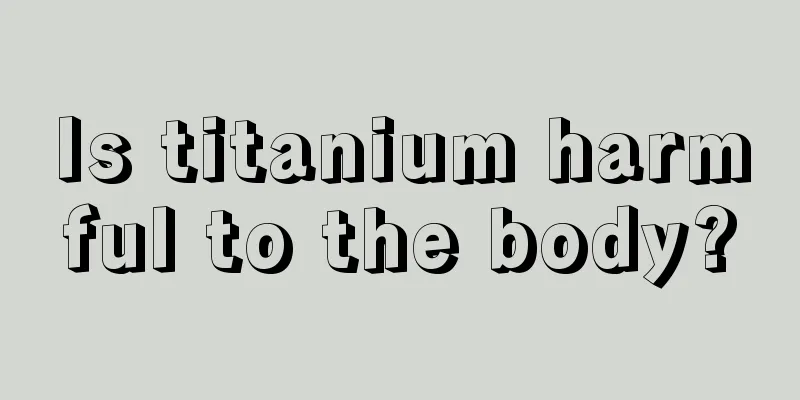What causes lumbar disc herniation

|
Lumbar disc herniation refers to a symptom of lumbar disc herniation. If some people suffer from lumbar disc herniation but do not seek treatment, it may lead to degenerative changes. Once this happens, the fibrous ring of the lumbar disc may rupture due to stimulation from the external environment, and the nucleus pulposus tissue will therefore drill out from the damaged area. Causes compression of spinal nerves. In this case, it will cause numbness in the feet and difficulty walking. So what are the specific causes of the disease? Causes 1. Degenerative changes of the lumbar intervertebral disc are the basic factors The degeneration of the nucleus pulposus is mainly manifested by a decrease in water content, and may cause small-scale pathological changes such as vertebral instability and loosening due to water loss; the degeneration of the annulus fibrosus is mainly manifested by a decrease in toughness. 2. Injury Long-term and repeated external forces cause minor damage and aggravate the degree of degeneration. 3. Weakness of the intervertebral disc’s own anatomical factors After adulthood, the intervertebral discs gradually lack blood circulation and have poor repair ability. On the basis of the above factors, some inducing factors that may cause a sudden increase in the pressure on the intervertebral disc may cause the less elastic nucleus pulposus to pass through the annulus fibrosus that has become less tough, causing nucleus pulposus herniation. 4. Genetic factors There are reports of familial incidence of lumbar disc herniation. 5. Congenital abnormalities of lumbar sacrum Including lumbar sacralization, sacral lumbarization, hemivertebra deformity, facet joint deformity and articular process asymmetry. The above factors can change the stress on the lower lumbar spine, resulting in increased intra-disc pressure and susceptibility to degeneration and injury. 6. Predisposing factors On the basis of intervertebral disc degeneration, certain factors that can induce a sudden increase in intervertebral space pressure can cause nucleus pulposus herniation. Common inducing factors include increased abdominal pressure, incorrect waist posture, sudden weight bearing, pregnancy, cold and moisture. Clinical classification and pathology The following classifications can be made based on pathological changes and CT and MRI manifestations combined with treatment methods. 1. Bulging type The annulus fibrosus is partially ruptured, but the surface layer is still intact. At this time, the nucleus pulposus bulges locally into the spinal canal due to pressure, but the surface is smooth. This type of disease can usually be relieved or cured through conservative treatment. 2. Prominent The annulus fibrosus is completely ruptured, the nucleus pulposus protrudes into the spinal canal, and is covered only by the posterior longitudinal ligament or a layer of fibrous membrane. The surface is uneven or cauliflower-shaped, and surgical treatment is often required. 3. Prolapse free type The ruptured and protruding intervertebral disc tissue or fragments may protrude into the spinal canal or become completely free. This type not only causes nerve root symptoms, but also easily leads to cauda equina symptoms, and non-surgical treatment is often ineffective. 4. Schmorl's nodes The nucleus pulposus enters the cancellous bone of the vertebral body through the cracks in the upper and lower end plate cartilages. Generally, there is only low back pain, no nerve root symptoms, and surgical treatment is usually not required. Clinical manifestations 1. Symptoms 1. Low back pain It is the first symptom that occurs in most patients, with an incidence of about 91%. Because the outer layer of the annulus fibrosus and the posterior longitudinal ligament are stimulated by the nucleus pulposus, induced pain in the lower back is produced through the vertebral nerve, sometimes accompanied by buttocks pain. 2. Radiating pain in the lower limbs Although high-level lumbar disc herniation (L2-3, L3-4) can cause femoral neuralgia, it is rare in clinical practice, accounting for less than 5%. The vast majority of patients have herniation between L4 and 5, or L5 and S1, and present with sciatica. Typical sciatica is pain that radiates from the lower back to the buttocks, back of the thigh, outer side of the calf to the foot. The pain is aggravated by increased abdominal pressure due to sneezing and coughing. The radiating pain is mostly on one side of the limbs, and only a very small number of patients with central or paracentral nucleus pulposus herniation show symptoms in both lower limbs. There are three causes of sciatica: ① The ruptured intervertebral disc produces chemical stimulation and autoimmune reactions, causing chemical inflammation of the nerve roots; ② The protruding nucleus pulposus compresses or stretches the inflamed nerve roots, blocking their venous return, further aggravating edema and increasing sensitivity to pain; ③ The compressed nerve roots are ischemic. The above three factors are interrelated and aggravate each other. 3. Cauda equina symptoms The nucleus pulposus protruding to the rear or the prolapsed and free intervertebral disc tissue compresses the cauda equina, which mainly manifests as difficulty in defecation and urination, and abnormal sensation in the perineum and perianal area. In severe cases, symptoms such as incontinence and incomplete paralysis of both lower limbs may occur, which are rare in clinical practice. |
<<: How does a ruby turn red
>>: How to apply gradient nail polish
Recommend
The "hangnails" on your fingers can't be pulled out
Introduction: I believe everyone has had the expe...
Cardiac imaging is dangerous
Cardiac angiography is harmful to the body. First...
How to know if you have endometrial cancer? You can look at the 4 early symptoms
Endometrial cancer is a common gynecological tumo...
Is white tea cake the same as white tea?
White tea is a slightly fermented tea. In recent ...
Low basal metabolic rate
Our body's daily life activities require a lo...
What are the symptoms of lung cancer? Symptoms of lung cancer at different stages
The occurrence of lung cancer will bring great pa...
Can nasopharyngeal carcinoma be cured in the middle stage? What are the folk remedies for treatment?
The main treatment for early nasopharyngeal carci...
Is the recurrence rate of brain cancer high?
The recurrence rate of malignant brain tumors is ...
What is the reason for white fingernails
The appearance of finger nails is a sign of healt...
10 ways to massage your ears to strengthen your kidneys and keep fit
Each organ and tissue of the human body has a cor...
What is the purpose of releasing mugwort during the Dragon Boat Festival?
Mugwort has a wide range of uses in life. For exa...
If you have a headache or eye pain, be careful because it's because you've overdone it!
Many people stare at computer screens for a long ...
The benefits of moxibustion on the waist
Many people do moxibustion on the waist because t...
What are the symptoms of being allergic to air conditioning
Human beings can be said to be the most intellige...
Lymphoma and running
Speaking of lymphoma, many people died of this di...









